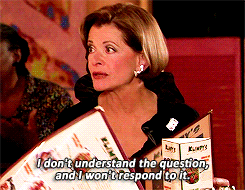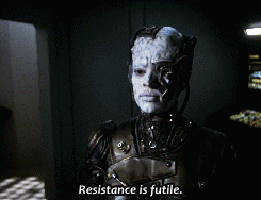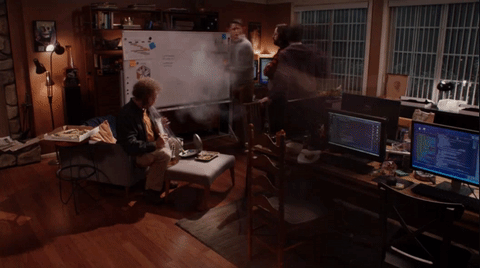by Nina Post
What's collective efficacy? It's a trust among team members who want to achieve common goals.
Here are 7 tips for increasing the collective efficacy of your team:
1. Follow a set of core values. Teams fall apart because of personality conflict, discipline problems, lack of cohesion, and poor motivation. I'm not talking about the core values of your team or company as they relate to the customer, but how your values relate to and resonate with the team. Values are in actions and behavior.
Aside from "don't hire assholes," when you become aware of any of those conflicts, tackle it aggressively from the beginning (in a good way), because once it gets to be a pattern, it's really hard to get people to change their behavior. A bad sign in a team is when people, whether managers or co-workers, aren't responsive to one another's requests.

2. Instill and encourage a culture in which people show one another appreciation, acknowledgment, and respect as individuals and professionals. Promote an environment where people communicate regularly and are responsive to one another.
There's a basic social contract among co-workers, and if people start ignoring that - not responding, not communicating - it can go downhill fast. I can almost guarantee you that if this is a problem, you won't achieve as much as you otherwise could. It's like an anvil on the motivation and efficacy of your team.
3. Use techniques of transformational leaders to create high levels of self-determined motivation in team members. Give them opportunities for higher skill and challenge.
4. Use techniques of transactional leaders by setting clear expectations and goals, or making sure those are set for the team. This goes back to core values, too.
5. Have your team spend more time together so they can build Transactive Memory Systems, or “shared systems for encoding, storing, and retrieving information.” If your team works remotely, it's good for them to get together when they can, even if it's just once a year. If you're in the same city, it's good to have everyone meet once a week to build that interpersonal dynamic (and TMS) that you don't necessarily get otherwise.
With a Differentiated TMS, people hold different (though possibly complementary) knowledge, whereas with an integrated TMS, people hold similar knowledge. For better collaboration and helping, you want an Integrated TMS.
6. Make your team more of a distributed cognitive system ("The Borg don't ingest food. Their implants can synthesize any organic molecules their biological tissues require. What they need is energy.")

To do this, take an extended cognition perspective and use a variety of visual representations.
External cognition posits that the brain relies on the external environment, especially for complex tasks. (I'm a huge proponent of taking notes by hand - I think it allows for much better retention and recall of information - and this is one example of external cognition.)
Boundary objects as visualization tools act as a bridge to communication and collaboration. These can be concept maps, charts, prototypes, project management tools, etc. Using these tools increases the sharing of information among people in the team and supports problem solving.

7. Use the Resonance Performance Model (RPM), a tool that covers the following four components: (a) The Way You Want to Feel, (b) Preparation, (c) Obstacles, and (d) Revisit The Way You Want to Feel.
If the team is procrastinating (or you are), try boosting your self-regulation with a pre-planned strategy and self-talk.
Pay attention to your internal responses as a part of self-regulation—it gives you a greater sense of control over how you perceive and handle obstacles. Plan a reference point of a desired way to feel when working with your team, and a way you don’t want to feel (when responding to obstacles).
I hope your team isn't dysfunctional, and instead, that it functions more like the Chicago Bulls from 1991-1993.
gifs by giphy.com
Sources:
Determinants of Prosocial Behavior in Included Versus Excluded Contexts
Personality and Social Psychology
An Investigation Into the Coaching Approach of a Successful World Class Soccer Coach: Anson Dorrance
International Journal of Sports Science and Coaching
Taking positive psychology beyond the individual
Positive Psychology: Harnessing the Power of Happiness, Mindfulness, and Personal Strength
Technology as Teammate: Examining the Role of External Cognition in Support of Team Cognitive Processes
A view from the inside: an in-depth look at a female university student's experience with a feel-based intervention to enhance self-confidence and self-talk
The Qualitative Report
With a little help from your friend
Journal of Social and Personal Relationships